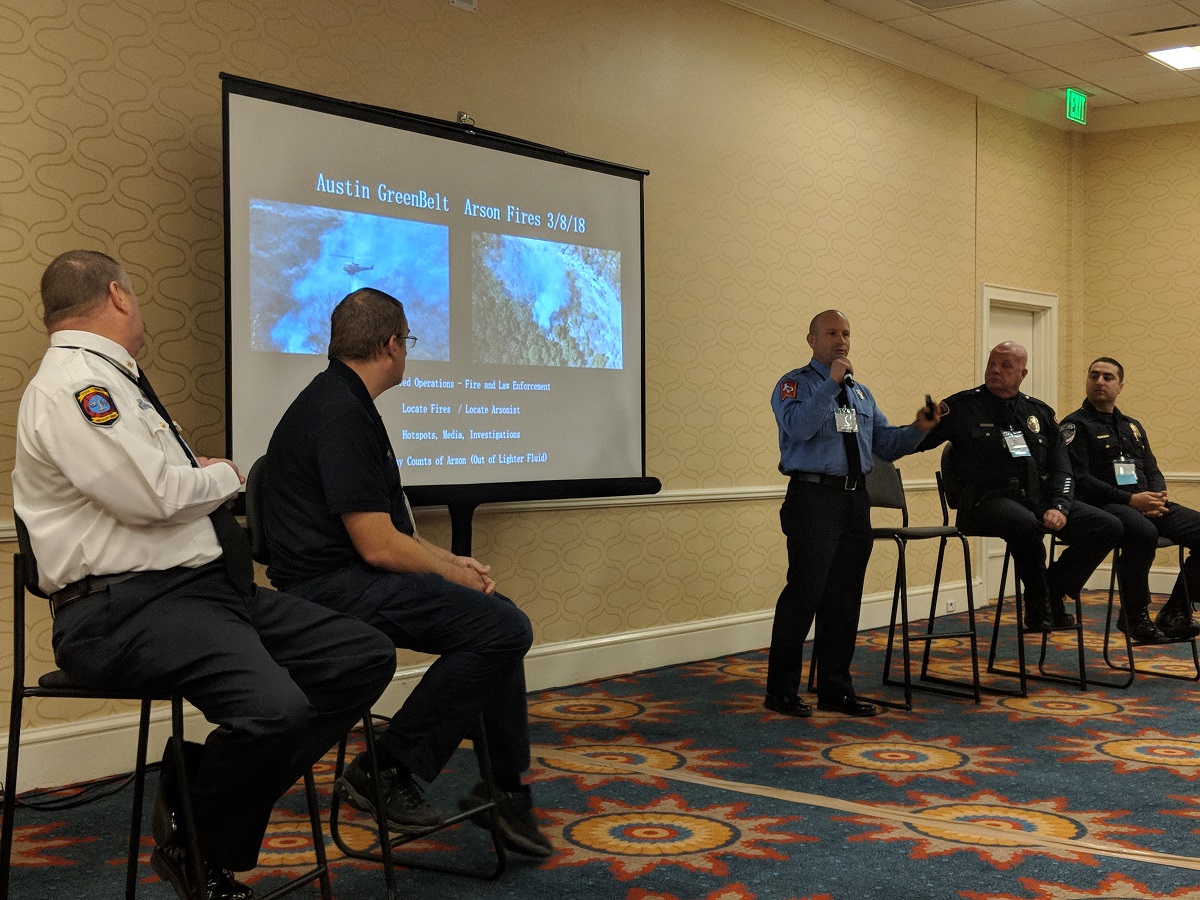The benefits that drones can enable for public safety officials are as numerous as they are powerful, with the potential to do everything from gather info about a fire to find a missing person quicker to ensure officers are not putting themselves in harm’s way. How exactly are public safety officials using drones today though? What are some of the innovations that they’re hoping to utilize in the near future? At DJI AirWorks 2018, we got all of those details and more.
Romeo Durscher is the Director of Education and Public Safety Integration at DJI, and he assembled an incredible collection of officials from across the country for a panel discussion at AirWorks. They talked through how drones are making a difference as they fight fires, keep officers safe and ensure that the public is aware of and embraces their use of the technology.
That last point illustrates just how far things have come over the last year or so since the public’s role in how these tools are being adopted had
previously been identified as the biggest challenge. While the officials on the panel mentioned that public acceptance is the top priority, they went beyond such concerns to detail issues that are a bigger priority for them today, such as bridging the gap between UAS and manned aircraft or getting the sign-off on a drone program from their city council.
During the session, Coitt Kessler from the Austin Firefighters Association detailed how his department used a drone to stop and catch an arsonist. They used their drone to locate the fires this person was starting, identify where that arsonist was headed, and then made an arrest. All of those actions were assisted and in some cases enabled by their use of the drone. One of the essential takeaways he had from the experience was that to make a drone program work, you need to be able to get on the scene immediately. Dispatch protocols are essential.
Barry Moore, Lead UAS Operator for the Manfield Police Department, showed a video that very well might have saved the lives of officers in his department. Using the drone, he was able to determine that a suspect was essentially lying in wait with a shotgun, and that information allowed his team to take appropriate action and apprehend the suspect without anyone getting hurt. He mentioned that if he can use a drone to just save one life, any and all costs are worth it, and he knows he’s already been able to prove that return.
The audience had numerous questions about what exactly it means to start and create a program, but we were able to catch up with Romeo to discuss not only what else is happening for drones in public safety right now, but what’s around the corner. Much of that has to do with
capability like AR overlays, but the collaboration that’s happening between departments across the country is also going to change things for the better.
Romeo mentioned that there are essentially two different paths for automation in this industry; one is on the flight side, the other is on the data side. On the flight side, there are numerous apps that can automate flight, but getting the data where it needs to go is a manual process. Automating this process is happening, but the next step is AI.
This next step will enable first responders to gather so much more information in an especially quick manner, and it’s going to make a big difference in certain situations, especially disaster response. They actually have a model for disaster response
and it looks incredible since it allows for near instantaneous identification of damage so first responders can immediately take action.
That increased response and action time can make such a difference in these kinds of situations, since cutting down time in the beginning makes the impact and timetable down the line that much less severe. Think of how much easier it makes things when power gets restored. Making it that much easier to take action is one of the benefits of the Mavic 2 Enterprise since it can fit in the glove compartment and be deployed faster than just about any other piece of drone hardware.
Of course, the
Mavic 2 Enterprise isn’t going to be a fit for all emergency situations, but neither is a drone, and that difference is something Romeo was able to highlight during the panel. There will always be a place for manned aircraft in this industry, but drones are and will continue to supplement how manned aircraft is utilized. That difference is something more and more departments are recognizing, and they’re that much more open to sharing this information and even sharing resources. It’s another illustration of just how far things have come with the technology and with the industry in a short period of time.
Department leaders like the ones on the panel at AirWorks and other leaders like the ones
at Menlo Park are helping to ensure that not only will public safety departments soon be expected to have a drone, but they’ll need to have different kinds of drones in order to handle different situations. That change is a result of leaders like Romeo helping public safety officials educate the public about the benefits of the technology while also highlighting results that have done everything from limit fire damage to save lives.
See a few more pictures and insights from the session below, or discover plenty more
from AirWorks 2018.















Comments